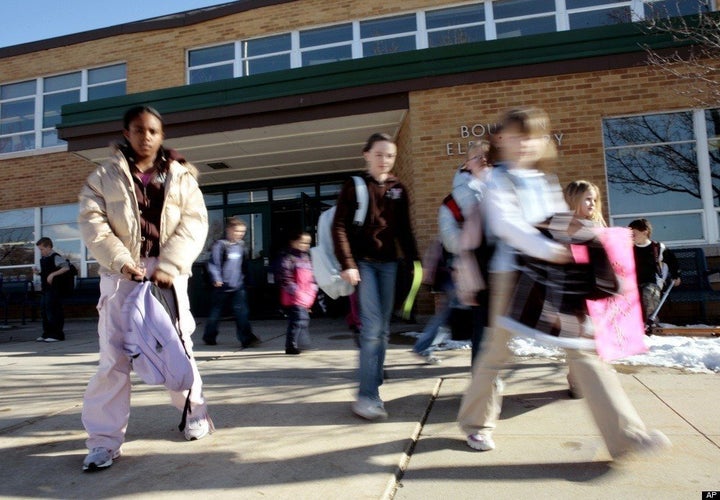
There is plenty of outrage apparent in the debate around reauthorizing the No Child Left Behind Act. Unfortunately, it is misplaced. The anger felt by some adults who believe 12 years was an "unrealistic" goal for getting our children reading and doing math on grade level misses the point of what's at stake.
Today in America, half of our minority students are getting out of high school on time. This achievement gap, repressing poor and minority students who are grossly underserved in our schools, is the raging fire in American education. And it is burning our future.
It is an outrage to parents when their children face lower expectations based on their skin color or zip code. It is an outrage to excellent and committed educators when poor performers continue to advance lockstep through an antiquated professional ladder that rewards seniority over effectiveness. And it is an outrage to hard-working Americans when our government spends more money per student on public education than nearly any other nation, and yet foreign students consistently outpace ours.
Starting with No Child Left Behind (NCLB), for the first time in 40 years, the federal government began demanding results in exchange for its investments. The law set broad parameters for states to set academic standards, including testing children annually in reading and math in grades three through eight and once in high school. The reason for this was simple. We wanted to help educators, parents, and the public to understand whether and how much students were actually learning, and to identify those who needed help so that they could get it. States and local districts were given the ability to fill in the details, since they pay 90 percent of the costs of education.
NCLB requires schools to measure and report on all students' achievement and codifies consequences for poor performance -- including free tutoring for struggling students or the option to transfer to a better public school. The law makes it possible for parents to get more information and make better decisions about their children's education.
When NCLB was passed, leaders in Washington had the political will and courage to ask the tough questions and seek the right answers. We had a president with a proven track record on education and several key legislators who believed that all students deserve a quality education -- and that our nation must demand no less.
To that end, the Congress enacted the best law it could based on what states were already doing, which in most cases was very little. A decade has passed since NCLB's inception, so of course it's prudent to revisit lessons learned over time. The greater capacity for using data that NCLB generated allows us to build on many of the initiatives piloted in the Bush administration, including the growth model and Teacher Incentive Fund programs.
Now that we have annual assessments, we can move to a system that recognizes growth. We can reward educators for increases in student achievement from year to year. We can give states the latitude to distinguish between schools that are "drop-out factories" and need an overhaul, and those that have more focused challenges and need targeted support. And we can emphasize college readiness by accurately measuring graduation rates and increasing rigor in high schools. These are just a few of the areas around which we should focus the reauthorization debate.
However, any new law must be a step toward stronger, more precise accountability. There are countless complaints from adults about how many schools are considered "failing" under NCLB. Consider the fact that for the 2009-2010 school year, approximately 16 percent of schools were identified for improvement. When half of our minority students are falling through the cracks and the majority of all students are performing below proficiency on the National Assessment of Educational Progress (NAEP), the numbers just don't add up. Accommodating the wishes of special interest groups at the expense of the needs of children and the hopes of parents will reverse the progress we have made on closing the achievement gap.
Reauthorization aimed at strengthening what works, changing what doesn't, and building on our success is a worthy goal. But we still have a strong law on the books that demands results for all students. Claims that we can't advance education reform until we change the law distract from the hard work already happening in many schools across the country, where they are simply getting it done.
I'm all for outrage if it's channeled in the right way for the right cause. When it comes to educating our children -- in whose hands America's future safety, security, and success resides -- we must channel our outrage to dramatically improve student learning for all children. Only then will we muster the political courage evident more than a decade ago to continue down the path of educational equality for all students.